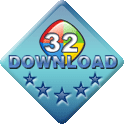| Home | Product: Disk Size Manager |
Help Section
Getting Started | Main Menu | Main Toolbar | Subsidiary Drive/Folder Scanning Toolbar | Graph/Details Area | Subsidiary Graph Toolbar | Application Options | File/Folders Search | Regular Expressions | Wasted Space | Notes on NTFS
Main Menu
File
save/load scanning results; print reports.
o Save data save the results of current scanning session into a file of XML format. The file can be loaded into Disk Size Manager later using the command Load data.
o Load data open an XML file which was saved by Disk Size Manager earlier. This command is used to visualize a previous scanning session results without re-scanning.
o Clear data clear the results of current scanning session.
o Export report to Excel save the results of current scanning session into a file of MS Excel format. The file will include detailed information about current drive and current folder. Graphs are not exported, neither is the information about other drives and folders.
o Export report to HTML save the results of current scanning session into a file of HTML format. The file will include detailed information about current drive and current folder. Graphs are not exported, neither is the information about other drives and folders.
o Export report to plain text save the results of current scanning session into a file of text ASCII format. The file will include detailed information about current drive and current folder. Graphs are not exported, neither is the information about other drives and folders.
o Print report print a detailed report about the scanned drive, currently selected folder and its sub-folders (total/used/unused size, number of files and folders, latest modification date, compression details, etc.)
o Print graph print only the picture from the Graph/Details area (available in the Pie graph and Bars graph modes).
o Exit close the application.
View
select the representation mode for the Graph/Details area.
o Go to parent folder switch to the parent folder of the one currently selected in the Folders area.
o Size specify measure units used for folders characteristics.
o Size for each folder show its normal size (not compressed; excluding unused excess).
o Compressed size for each folder show its compressed size.
o Usage for each folder show size actually used by it on the disk (including unused excess).
o Unused excess for each folder show its unused excess (it depends on the cluster size).
o View percents for each folder show not absolute but percentage volume in relation to the parent folder (normal/compressed/etc. size depending on other settings).
o Sort set the sorting order for folders in the Folders area.
o Sort by name sort folders by name, alphabetically.
o Sort by size sort folders by size, descending.
o No sorting show folders unsorted. This option is useful if large folders or many folders are to be scanned. Choosing this option you prevent the folders from changing their places in the list during their scanning.
o Pie graph represent the results of scanning of the currently selected drive/folder graphically, with a pie graph.
o Bars graph represent the results of scanning of the currently selected drive/folder graphically, with a bars graph.
o Details represent the general results of scanning of the currently selected drive/folder in words. You will see a table containing folders name, total/used/unused size, creation/modification dates, etc.
o File types represent the results of scanning of the currently selected drive/folder in words, generalized by file types (extensions). You will see a table which shows total files count, size and other info for each file type.
o File owners represent the results of scanning of the currently selected drive/folder in words, generalized by file owners. You will see a table which shows total files count, size and other info for each files owner.
o Drives information place the data grid with general information about available drives at either top or bottom of the main window.
Scan
start/stop scanning drive or folder.
o Scan selected drive start scanning the currently selected drive (all folders).
o Stop scanning selected drive stop scanning the drive.
o Scan folder start scanning the currently selected folder.
o Rescan selected folder start scanning the currently selected folder and its subfolders anew.
o Stop all scans stop scanning all drives and folders.
Tools
additional features and settings.
o Search for files/folders activate the dialog to search file or folders by some criteria specified by you. See the section File/folders search for the details.
o Map network drive map a network drive or folder to represent it as a local one.
o Options activate the application options dialog.
Help
this help and the About dialog.
 |
|
 |